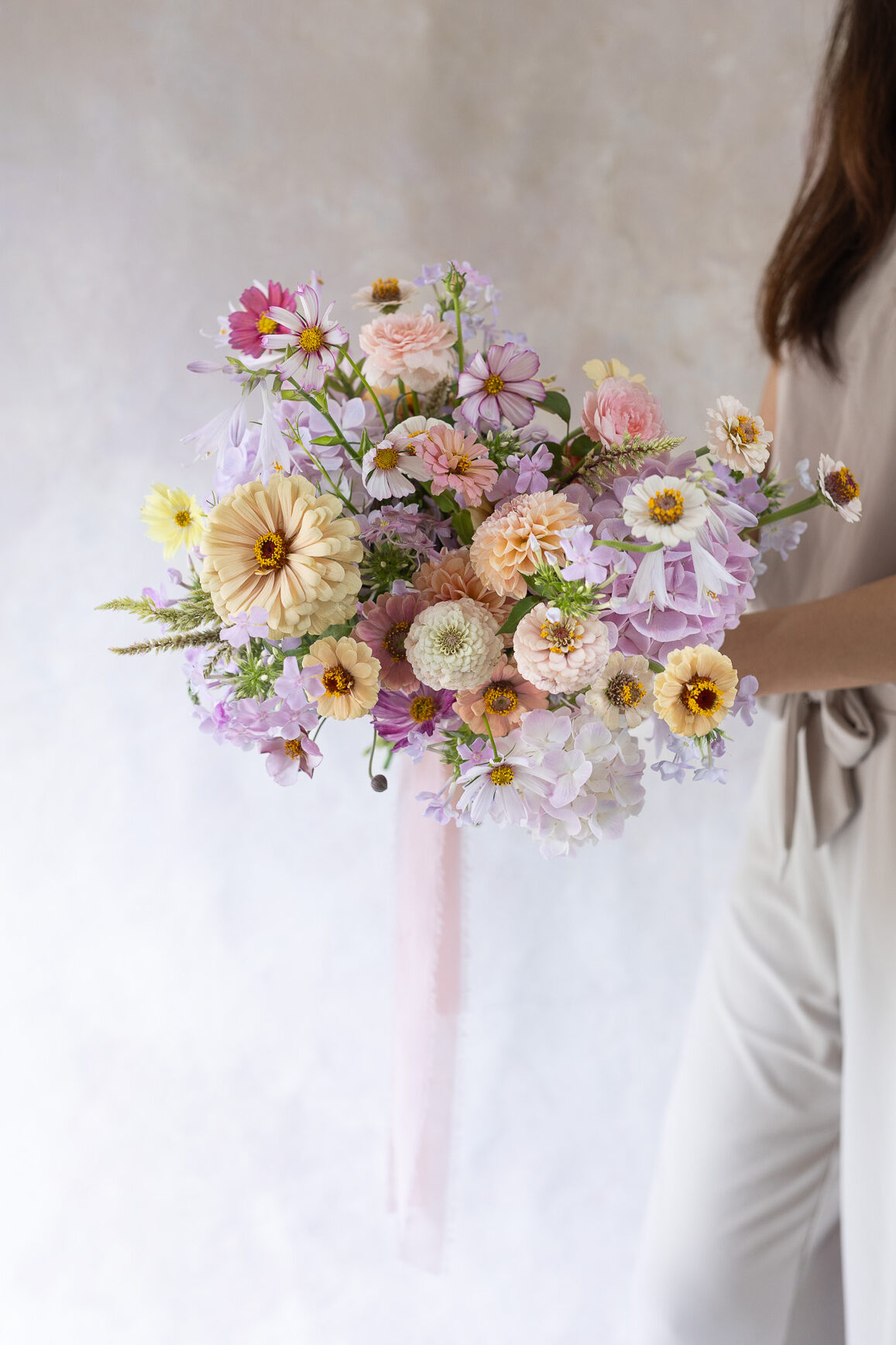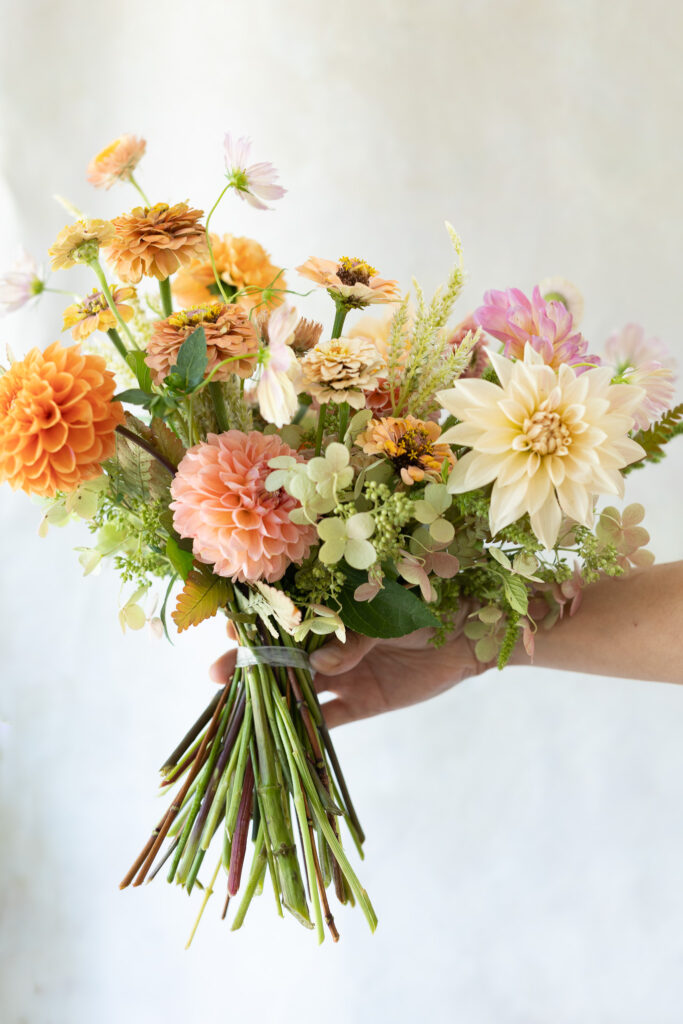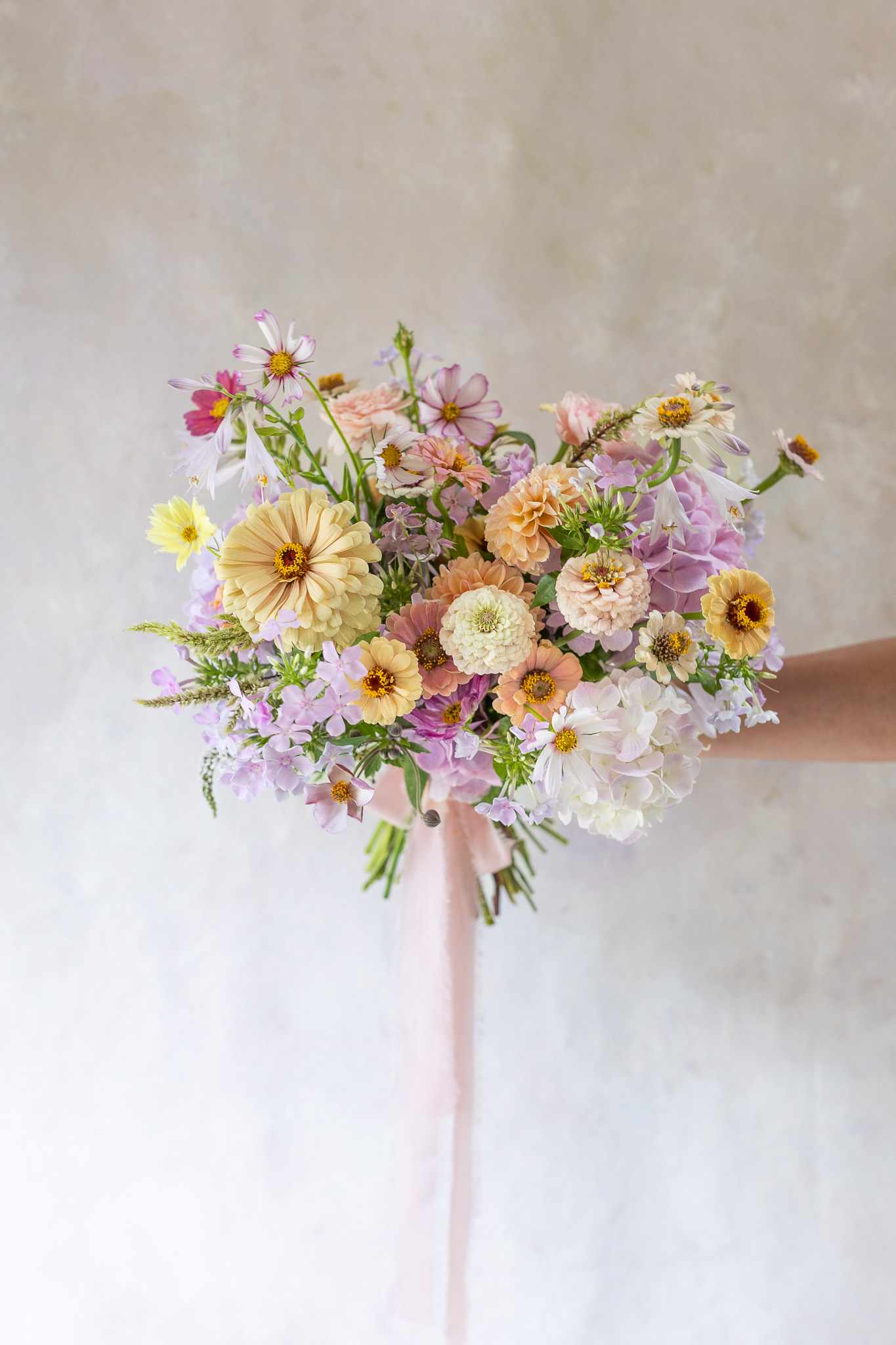About
Blog
Stemslider
Workshops
Bouquet Recipes
Shop
Discover Bouquet-making tool "StemSlider" - Available Worldwide!
Browse around
topics
Hello Everyone!
floral designer + educator
I'm Koko
I'm floral designer, gardener and your flower bouquet coach. I'm so glad you're here. Let's enrich your bouquet skills together! Read my story
When making wedding bouquets, how do you tie them? I learned to tie wedding bouquets with twine at flower schools a long time ago. Over the years, I’ve experimented with different materials, and in this post, I want to share my favorite way to tie wedding bouquets.

Materials for Tying Wedding Bouquets
Here are materials that can be used to tie wedding bouquets:
- Floral tape
- Waterproof floral tape
- Twine
- Raffia or ribbon
- Rubber band
- Bind-It (by Oasis)
- Zip tie
- Wire
In the past, I’ve used twine, raffia, rubber bands, and floral tape (sometimes in combination). I liked using light green floral tape most because it’s soft, stretchy, and adhesive, making it easy to tie bouquets without damaging the stems. However, I found that the soft floral tape wasn’t always secure enough for large bridal bouquets.
Although I’ve seen some people use zip ties or wire to tie bouquets, I have never tried to use them as I thought they could damage soft stems.
My Favorite Way to Tie Wedding Bouquets
After trying various materials, my favorite method is using ‘1/4″ green waterproof floral tape’ by Oasis. I think that it secures the stems nicely without causing any damage.
I typically use two about 12-inch strips of waterproof tape per bouquet, and occasionally, I’ll add an extra piece if I decide to add more flowers after tying the bouquet.
Recently, I also started using ‘Bind-It’ tape by Oasis, and I’m really enjoying it (shown in the photo below). Although it’s a bit more expensive than regular tapes, it stretches and only need about 5-6 inches, so if I use two strips per bouquet, it allows me to create 15 or more bridal bouquets per roll. It comes in clear and green, and if you haven’t tried it yet, I highly recommend giving it a go—it might be a great option for you too!

Each of these materials can be chosen according to the shape and style of the bouquet, or your personal preferences.
Related
Pin
Share
Leave a Reply Cancel reply
Previous Story
next Story
© 2025 Koko Floral Design, LLC
Join Me on Insta
How to Effortlessly Make a Loose & Airy Cascading Bouquet
I'm so glad you're here. Let's elevate your bouquet-making skill together!
